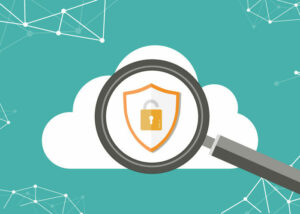Security misconfiguration arise when security settings aren’t defined or implemented, and default values are maintained.
OWASP Security Misconfiguration: Misconfiguration, which ranks among OWASP’s top 10 app security risks, continues to shock even the most sophisticated enterprises. According to a McAfee study, up to 99 percent of cloud misconfigurations go unreported, increasing the risk of external interference for many systems.
When measures intended to protect an app are not correctly implemented, security misconfiguration occur, leaving the system open to assaults. In addition, significant data breaches may occur if a system developer or administrator fails to effectively configure the app or website’s security architecture. For instance, the Atlassian JIRA security misconfiguration resulted in a significant data breach in which security researcher Avinash Jain gained access to critical user data.
Any level of the app stack, including databases, storage networking, and platform development, is susceptible to misconfiguration errors. A simple search query may uncover a security misconfiguration in a system.
[lwptoc]
What is Security Misconfiguration?
Security misconfigurations are security controls that have been incorrectly configured or left unprotected, putting your systems and data in danger. A misconfiguration could result from poorly described configuration modifications, default settings, or a technical issue affecting any component of your endpoints.
What are common types of security misconfigurations?
Some common security misconfigurations include:
- Unpatched systems
- Unused web pages
- Using default account credentials (i.e., usernames & passwords)
- Unprotected files & directories
- Poorly configured network devices
Why Avoiding Security Misconfigurations is Important
Configuration errors create system vulnerabilities that hackers and cybercriminals can exploit in many ways to harm your organization. An attacker could, for instance, use a security misconfiguration to obtain unauthorized access to a company’s important data or services.
Configuration errors can also lead to remote attacks in which hackers disable networks and access servers remotely. In addition, if the security framework is not configured correctly, an attacker will access and disable the apps security protections, such as VPNs and firewalls.
Cloud misconfiguration issues are typically devastating for businesses, as they frequently result in reputational harm, regulatory penalties, and the exposure of potentially sensitive data. Occasionally, attackers exploit security misconfiguration to perform directory traversal attacks and even attempt to alter sections or reverse-engineer the app.
In addition, configuration errors enable attackers to create unauthorized connections with an enterprise’s IT ecosystem if an app seeks to communicate with nonexistent apps.
5 Surefire Ways to Avoid Security Misconfiguration at Your Company
How can I prevent security misconfigurations? Errors in security configuration are common and can occur at any level of system, device, or app development. However, implementing these tried and true procedures may safeguard your company from the potentially harmful effects of security misconfiguration.
1. Education and training on cybersecurity
Training your workers on the most recent security trends and best practices is essential for effective decision-making and the successful adoption of secure cybersecurity policies. Consider educating the workforce on the importance of strong passwords, properly handling sensitive data, and detecting suspicious activities.
2. Strong access controls
Users should only access the data they need to complete specific tasks. For example, data compartmentalization can ensure administrators only have administrative privileges if they use separate accounts from standard user accounts. Implementing strong passwords and two-factor authentication is another straightforward method for access restriction. You can also implement a multilayered remote security approach with firewalls, authorization zones, intrusion detection systems, and virtual private networks (VPNs) to reduce the threat of remote users.
3. Regular software and device updates
Using inexpensive, obsolete software contributes significantly to security issues. Although older programs may appear less expensive, they risk the business losing its reputation, investors, and assets. It would assist if you established a regular security patch plan to guarantee that your software is up-to-date and that the number of threat vectors is minimized.
ALSO SEE: How Secure is your Internet Connection
You can also deploy a virtual machine that is correctly configured, known as a golden image, to assist in identifying and resolving configuration errors. Such solutions are essential for identifying and mitigating potential security misconfiguration issues.
4. Data encryption
Prevent data exfiltration by encrypting data at rest and implementing stringent access controls to files and folders. If sensitive information about your clients, such as credit card data, falls into the wrong hands, the resulting losses and damages can be unpleasant.
5. Safe coding practices
To prevent configuration errors, system developers must use secure coding techniques. You must verify the use of suitable input/output data validation in codes, the configuration of custom error pages, and authentication. Before incorporating static code into the production environment, it is essential to set the session timeout and run it via a scanner.
Vulnerabilities — the Gateway to the Network
Malicious actors use misconfigurations to gain access to their intended targets. Some of these misconfigurations are largely unavoidable in large-scale organizations. However, they are not difficult to correct.
Security misconfigurations are on the OWASP Top Ten list, ranked number six this year. To avoid this risk, organizations need to educate their staff, keep software up-to-date and ensure they are configuring their network equipment to current industry best practices





